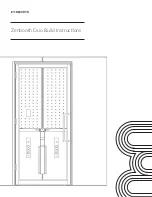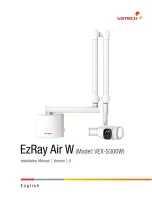
Theory of operation
Puritan Bennett™ 700 Series Ventilator System Service Manual
10070389 Rev. A
2-71
Pressures on both the inspiration and exhalation sides of the ventilator breathing circuit are
measured by the cylinder, inspiration, and exhalation pressure transducers during gas
delivery. They are used in breath delivery calculations.
During gas delivery, the oxygen side remains pressurized, but there is no flow, as the oxygen
solenoids are de-energized.
2.6.4 Exhalation and piston retraction
In a mandatory/assist VCV breath, exhalation is declared when the full volume is delivered
and any plateau period has ended. (See Figure 2-59 and Figure 2-60). In a mandatory/assist
PCV breath, exhalation is declared when the selected inspiratory pressure has been delivered
for the set inspiratory time. In spontaneous breathing, exhalation is declared when an
inspiratory pressure, flow, or time threshold is reached. During the exhalation phase, these
two actions occur simultaneously:
• The patient exhales through the opened exhalation valve.
• The cylinder is filled in preparation for the next breath.
2.6.4.1 Exhalation
When exhalation is declared, the exhalation solenoid is de-energized, supplying PEEP pilot
pressure to pilot the exhalation valve to the operator-selected PEEP level, if any. The patient
can now exhale through the exhalation assembly. The gas is routed through the exhalation
flow sensor before being vented. Spirometry measurements are made by the exhalation flow
sensor.
2.6.4.2 Piston retraction
While the patient exhales, the cylinder is filled with gas in preparation for the next breath. To
fill the cylinder, the ventilator retracts the piston to its home position at a rate equivalent to
150 L/min at a minimum. After it reaches home, the piston may move forward continuously to
maintain PEEP. During retraction, the ventilator energizes one of the oxygen solenoids if
required. The piston retraction causes the cylinder pressure to fall, which causes air and/or
oxygen to be drawn into the cylinder.
2.6.4.2.1 An oxygen percentage of 21 is selected
The cylinder is filled with room air. As the piston retracts, the negative pressure in the
cylinder draws in ambient room air. (See Figure 2-61).
2.6.4.2.2 An oxygen percentage greater than 21 is selected
The cylinder is filled with a combination of room air and oxygen. Two solenoids, the high-
and low-flow oxygen solenoids, control the flow of oxygen toward the cylinder. (See
Figure 2-61). One of the solenoids is energized during a breath. The high-flow solenoid,
which can deliver greater than 150 L/min through its orifice, is used when a larger volume of
oxygen is required. The low-flow oxygen solenoid, which can deliver 15 L/min through its
orifice, is used when a smaller volume of oxygen is required.
The volume of oxygen needed to obtain the correct air/oxygen mixture is determined from
the calculated retraction volume. Each orifice can deliver a specific oxygen flow. If it would
take less than 30 ms to deliver the required oxygen volume through the high-flow orifice, the
low-flow solenoid/orifice is used. If it would take more than 30 ms to deliver the oxygen
volume through the high-flow orifice, the high-flow solenoid/orifice is used. Typically, the
high-flow solenoid is used when greater than 30% oxygen is selected, and the low-flow
solenoid is used when less than 30% oxygen is selected.
Summary of Contents for Puritan Bennett 700 Series
Page 1: ...Service Manual Puritan Bennett 700 Series Ventilator Systems TM...
Page 439: ......
















































